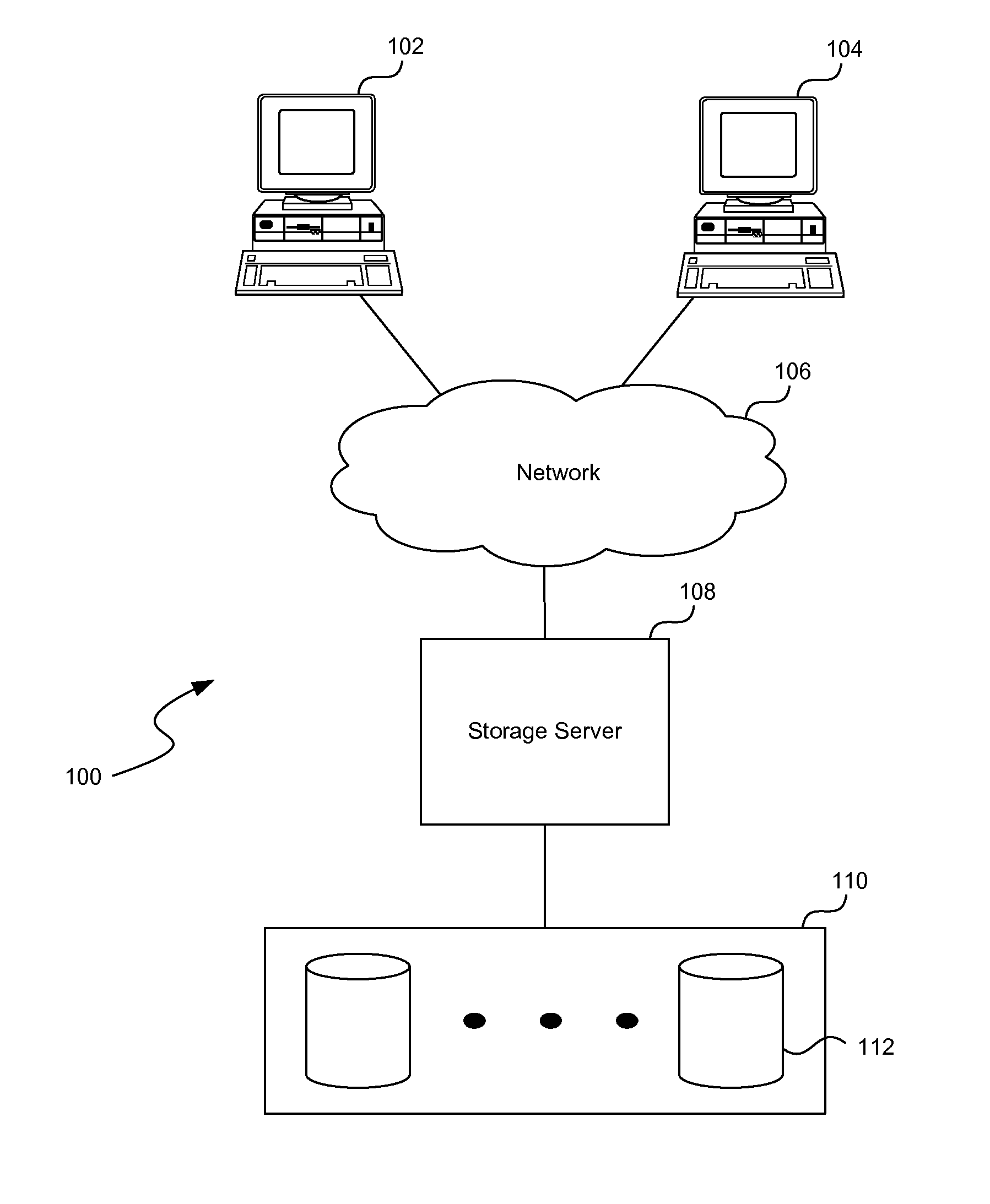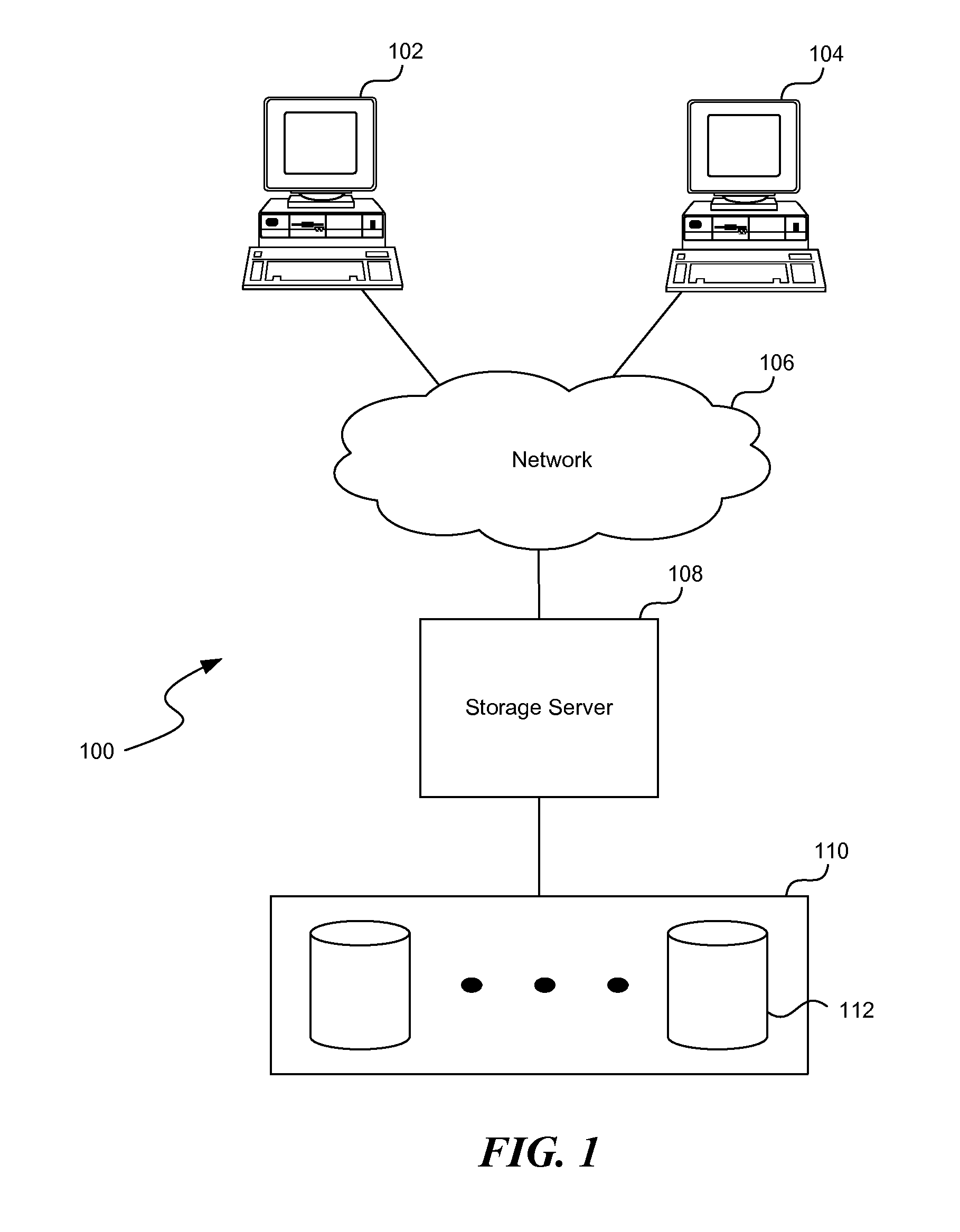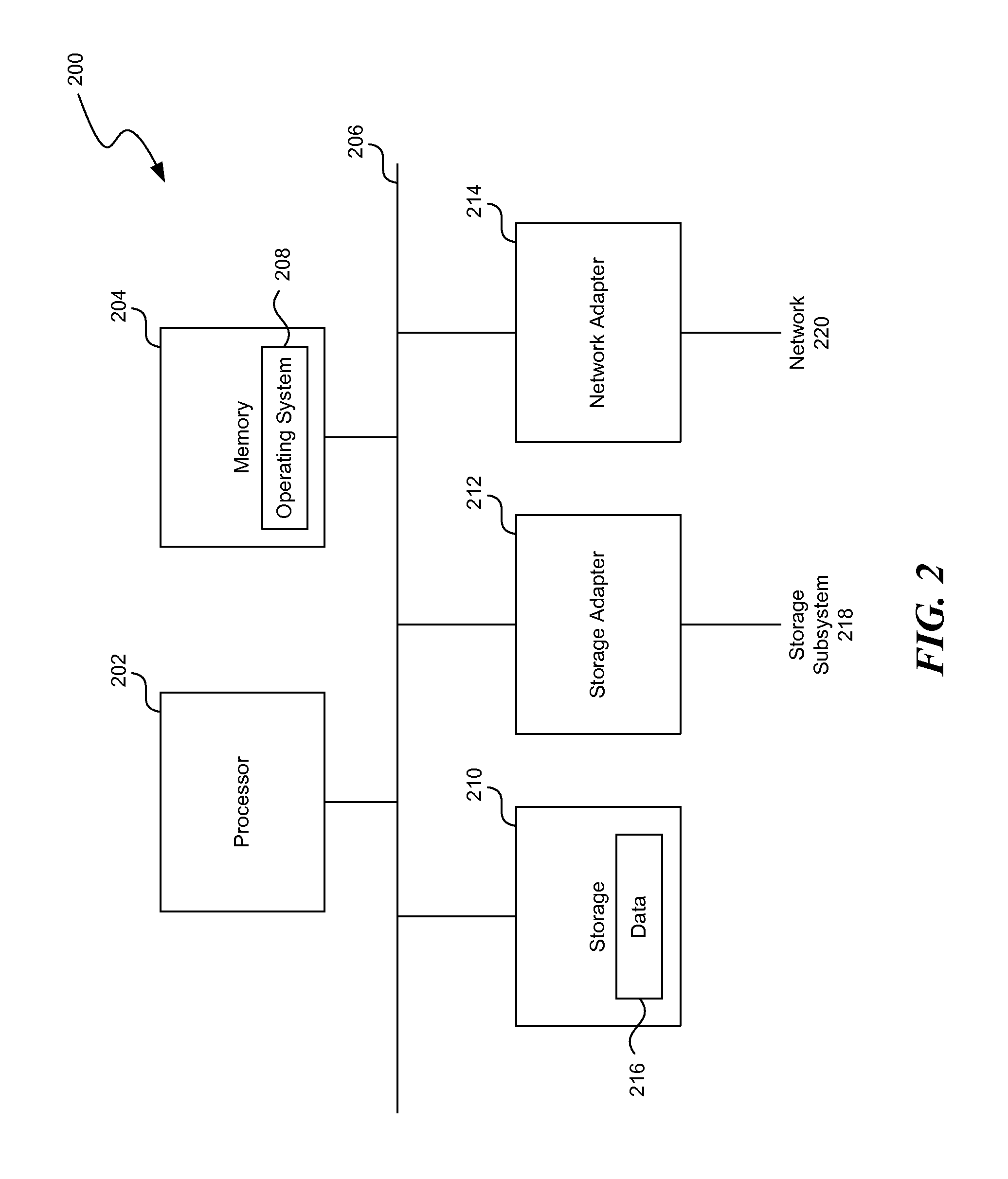Method and system for providing substantially constant-time execution of a copy operation
a technology of substantially constant-time execution and copy operation, which is applied in the direction of digital data processing details, file system administration, instruments, etc., can solve the problems of user perception time and the largest portion of time consumed by users, and achieve the effect of reducing disruption to users
- Summary
- Abstract
- Description
- Claims
- Application Information
AI Technical Summary
Benefits of technology
Problems solved by technology
Method used
Image
Examples
Embodiment Construction
[0017]A system and method for executing a substantially constant-time copy of a file is disclosed (hereinafter referred to as “the copy system” or “the system”). The system copies a file or other type of data object by generating a new metadata container (the “destination metadata container”) and copying some metadata (e.g., access control information) from the source metadata container to the destination metadata container. After the destination metadata container has been created, the system copies each of the indirect blocks from the source metadata container to a corresponding location in the destination metadata container. The system then provides special implementations of file system operations to enable a user to execute the file system operations on the destination metadata container while the copying process is ongoing.
[0018]To support a read operation, the system generates a snapshot (i.e., a read-only, persistent, point-in-time image) of the source metadata container whe...
PUM
 Login to View More
Login to View More Abstract
Description
Claims
Application Information
 Login to View More
Login to View More - R&D
- Intellectual Property
- Life Sciences
- Materials
- Tech Scout
- Unparalleled Data Quality
- Higher Quality Content
- 60% Fewer Hallucinations
Browse by: Latest US Patents, China's latest patents, Technical Efficacy Thesaurus, Application Domain, Technology Topic, Popular Technical Reports.
© 2025 PatSnap. All rights reserved.Legal|Privacy policy|Modern Slavery Act Transparency Statement|Sitemap|About US| Contact US: help@patsnap.com



